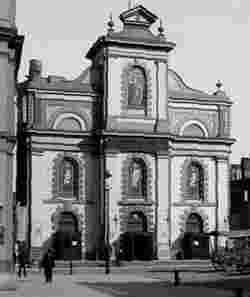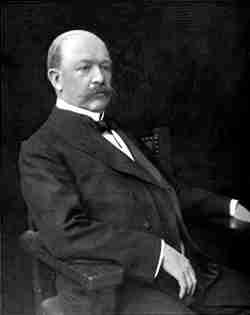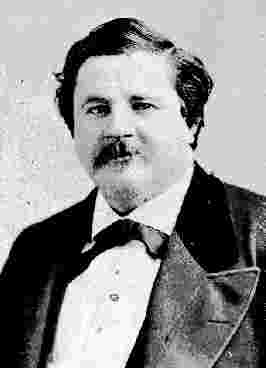Vaudeville, the combination of burlesque, circus, minstrel show, musical review and repertory theatre, which entertained millions in the 19th and early 20th century. But where did it all begin and why did it end.
The birth of vaudeville is rather vague. It did not begin at any one place or time, but rather it grew gradually out of early America's thirst for variety entertainment.
The word vaudeville is also ambiguous, no one is certain of it's origin. Some suggest that it may have come from the French phrases "vaut de ville" (worth of the city) or "voix de ville" (voice of the city).
The rapid growth of vaudeville popularity has often been attributed to two men Tony Pastor and Benjamin Franklin Keith.
In early America variety stage entertainment was mostly performed in saloons, bars and gaming houses in an effort to attract male audiences and keep them in the establishment for longer periods of time. The performances were adult in nature, with scantily clad women and risque comedians.
In 1865 variety entertainer Tony Pastor (who is known as the "father of Vaudeville"), saw a need for more family oriented entertainment. He also saw an opportunity, if he could persuade women and children to attend stage shows profits could double.
Pastor began this new form of entertainment with traveling minstrel shows. In 1881 Pastor lease the Germania Theatre (formerly the Church of St. Ann's), in New York City. He began alternated between operettas and variety entertainment. This is considered to be the birth of Vaudeville.
These family-oriented variety shows grew in popularity and soon became imitated.
In 1885 former circus man and museum operator Benjamin Franklin Keith along with business partner Edward Franklin Albee II, began operating the Boston Bijou Theatre in Boston, Massachusetts. they began running continuous variety performances from 10 AM until 11 PM. The continuous format was a success, patrons would enter the theater at any time and stay until they saw the same act repeated.
B. F. Keith began operating this continuous variety show format in other cities and soon was buying and building his own theaters which became known as the Keith Circuit.
Vaudeville grew and before long spread throughout the country. Now there was a great demand for performers, and they came out of the woodwork. Singers, dancers, comedians, jugglers, magicians, dog acts it seamed that everyone wanted to be a vaudevillian.
Many of the 20th century top stars came from vaudeville, Bob Hope, Cary Grant, James Cagney, George Burns, Gracie Allen, W. C. Fields, Jack Benny, Milton Berle, Red Skelton, Lucille Ball, Desi Arnaz, Buddy Ebsen, Bert Lahr, Morey Amsterdam and many more began their careers performing in vaudeville.
Vaudeville and it's audiences grew and buy the early 1900s almost every town had at least one vaudeville theater. Patrons filled theater seats and eagerly awaited to see who would be performing next week. Nothing could stop this entertainment phenomenon exploding across the nation, or so it would seem.
In the early 20th century theaters began replacing the colorful stage backdrops with rather dreary white screens in order to accommodate a new form of entertainment called Motion Pictures.
When motion pictures began they were short, silent and black and white. They were shown along with vaudeville performances as a novelty or extra attraction. As the movie technology developed the vaudeville acts became the extra attractions and the movies were featured.
Another modern technology was also becoming popular, radio. Now families could sit at home and laugh at Jack Benny or listen Glenn Miller and Benny Goodman.
During World War II performers began to be hard to find, many had been drafted and others were working at factories supporting the war effort. Hollywood was booming, war movies were being produced as quickly as possible and audience were eager to see them.
Vaudeville had began to fade, vaudeville performers were replace by images on Celluloid film. the days of live variety entertainment on stage had ended and with it a wonderful era of American culture.
|




